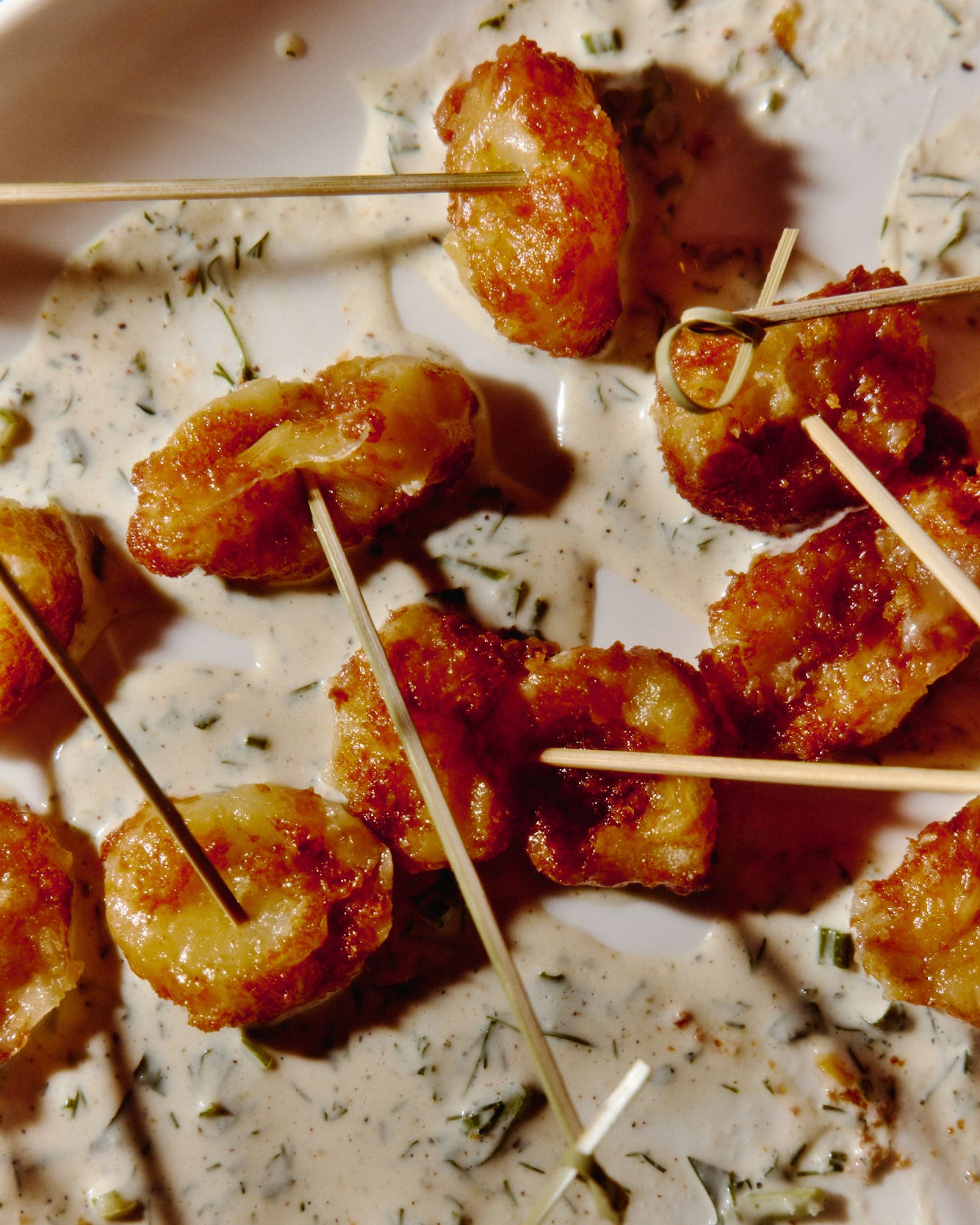
Pasha in the Spice Rack
Nutmeg has exotic origins, a vivid history, and a number of delicious secrets.
I grew up in a household without nutmeg. "I don't particularly like the flavor," my mother once explained to me when I asked her why she had deprived me, for all those years, of what has since become one of my favorite spices.
She isn't alone in her lack of appreciation for this versatile aromatic. In the U.S., we tend to think of nutmeg as little more than a poor relation of cinnamon, as merely a brown powder that languishes in a dusty little tin on the spice rack, to be taken down occasionally and added sparingly to cake, cookies, or maybe apple pie. In other parts of the world, however, nutmeg is used more frequently and in more generous quantities—in savory dishes as well as sweet. In North Africa, it's one of 20 or 30 ingredients in the heady seasoning mixture known as ras el hanout. In India, it goes into garam masala, to be used in curries. Regarded as an aid to digestion, nutmeg is often added to cream sauces and other rich foods. Italians value it in pasta fillings, while the French consider it an essential element in sauce bechamel and blanquette de veau (and in an assortment of pates and terrines).
Nutmeg is the seed of the nutmeg tree, Myristica fragrans, native to the Moluccas, or Spice Islands, now part of Indonesia. (The tree's botanical name comes from the Greek myristikos, which means "smelling of myrrh".) Waverley Root notes that nutmeg, a polygamous plant, has been called "the pasha of tropical flora". Each male tree is surrounded by a small grove of female ones, which it fertilizes. The female trees bear seeds enclosed in a hard, yellow outer coating. When the fruit is ripe, the coating cracks, revealing a lacy, orange-red aril, or membrane, surrounding the seed. The aril, when dried, becomes the spice called mace, and is sold either ground or in segments called blades. Mace tastes a lot like nutmeg, but is lighter in color and flavor. After the aril is removed, the nutmeg—a hard, wrinkly, oval-shaped, gray-brown kernel—is left to dry in its shell. The shell is then cracked open and the nutmeg removed, to be sold either whole or in powdered form.
Known in Europe by the late 12th century, nutmeg, like other spices, was an expensive commodity—a status symbol of the elite classes. To protect the exorbitant prices at which they sold it, Arab merchants kept the source of nutmeg a secret, until the Portuguese discovered the Moluccas in 1512.
The Portuguese developed a profitable nutmeg trade, but lost the islands to the Dutch—who, by the middle of the 17th century, had monopolized the world trade in nutmeg and mace, as well as in cinnamon and cloves. Fearing that their rivals would try to grow their own nutmeg trees, the Dutch went so far as to soak nutmeg seeds in lime before exporting them, so that they would not germinate.
In a daring raid on the Moluccas in 1770, a French merchant with the appropriate name of Pierre Poivre stole 400 nutmeg trees and thousands of untreated seeds, and planted them in the French colony of Mauritius, in the Indian Ocean. Unfortunately, the plants didn't take well on that island, and the Dutch managed to remain supreme in the nutmeg trade until the British occupied the Moluccas in 1796. The British were able to accomplish what the French couldn't: They planted nutmeg successfully outside the Moluccas—in Penang, their colony on the Malay Peninsula. Not long afterwards, the price of nutmeg fell.
Brought to the Americas by the British, nutmeg thrived on the Caribbean island of Grenada—now often considered to produce the world's best examples of the spice. In earlier times, nutmeg, like other spices, was often landed through ports on the coastline of Connecticut—which became known as "The Nutmeg State". Wealthy Americans quickly developed a taste for it, and took to carrying portable nutmeg graters—small, hinged boxes with sharp grating surfaces and a special storage compartment for the nut itself. Freshly grated nutmeg is a remarkably flavorful and (in a good sense) pungent spice; the ground stuff offers only a pale imitation.
Nutmeg has uses other than culinary, it might be noted. In 1190, for instance, the streets of Rome were perfumed with the scent of burning nutmeg to celebrate the entry of the Holy Roman Emperor, Henry VI. Four and a half centuries later, in London, nutmeg was used along with other spices as a fumigant against the Great Plague. Nutmeg's medicinal properties are still valued in Grenada, where it is mixed with Vaseline as a vaporizing rub.
Nutmeg also has mild hallucinogenic powers—derived from the toxic oil myristicin—and can induce euphoria as well as severe headaches and nausea. (When Winchell's Donuts opened two shops in Egypt, they had to alter their original recipe, which includes nutmeg; the spice is outlawed there as an illicit drug.) There's no need to worry about the nutmeg in that blanquette de veau or atop that holiday eggnog, though. The average dose needed to produce hallucinations is about two whole nutmegs—and that's a lot to grate.
Keep Reading
Continue to Next Story










